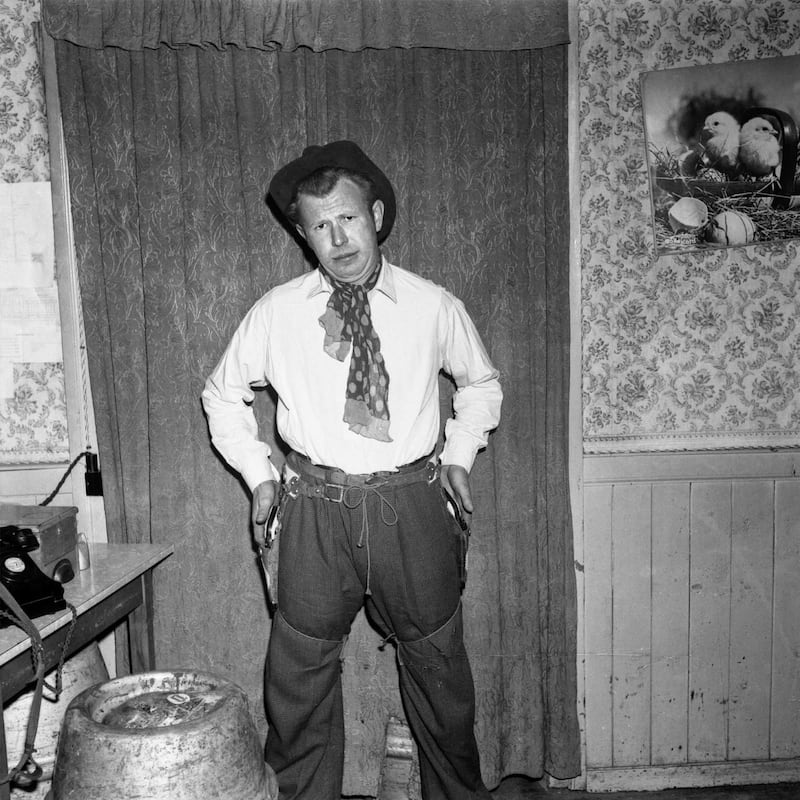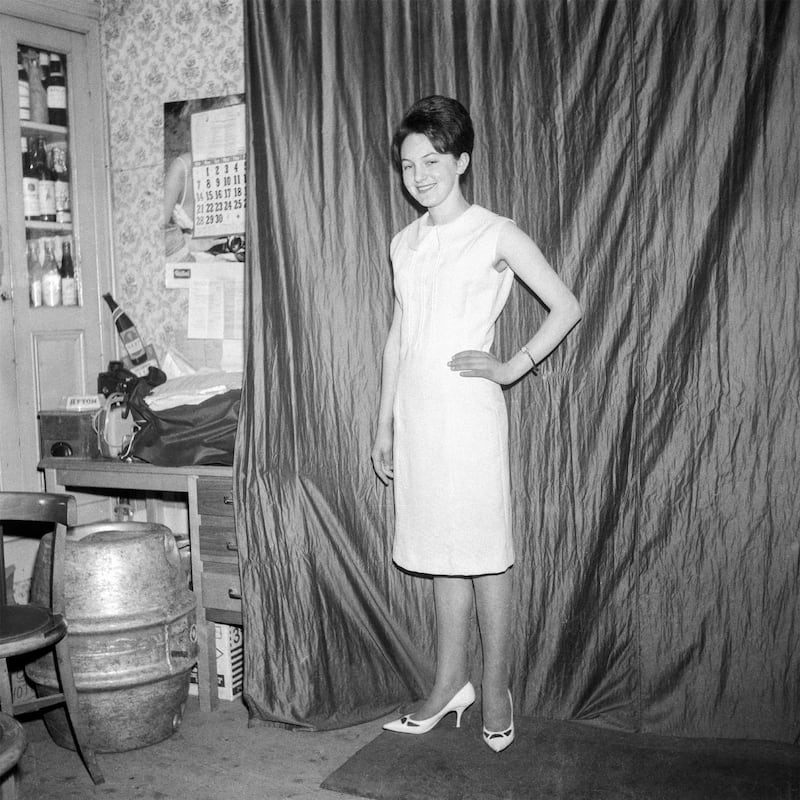Small Town Portraits – Dennis Dinneen
Gallery 1, Douglas Hyde Gallery, Trinity College, Dublin. Until May 27
*****
Dennis Dinneen was a publican, taxi driver and jobbing photographer in Macroom in Co Cork. From the 1950s, operating as Macroom Photographic Service, he was the go-to photographer in the area if you wanted a head-and-shoulders portrait for a passport or driving licence, a family group or a record of your wedding, communion or any other social or communal gathering.
By the time of his death, in 1985, he had amassed a huge archive of material. Some years ago, local photographer Seán Mac Suibhne went through some of this archive and produced, for charity, a publication centred on images of daily life in Macroom.
Then another photographer, David J Moore, who had lived in Macroom for a number of years and had encountered Dinneen's work hanging on the walls of the family pub, asked if he could have a look at the archive.
As it happened, Dinneen’s son Laurence had started to scan and catalogue his father’s vast store of what is reckoned to number in the region of 20,000 images in all. Having sifted through an estimated 6,000 negatives, they haven’t finished yet by any means, but Moore was amazed at what was there.
By way of a progress report, he put together a collection of images that make up a moving and fascinating exhibition, Small Town Portraits. It was first seen at Boole Library in UCC and is currently on view at the Douglas Hyde Gallery.
Curatorial input
It’s important to point out that it’s not just a miscellany, a selection of edited highlights. Moore’s curatorial input is crucial to what we see.
He looked for posed, indoor portraits rather than informal street snapshots. While most were taken with the sitters posed in Dinneen’s improvised studio setting, a room adjacent to the long, narrow pub, the results were usually cropped, a little or a lot, to edit out detail irrelevant to the images’ intended purpose.
There are exceptions, but mostly the full-frame prints on view do not reflect the way the work was intended to be seen.

Yet without a doubt, the wider pictorial context enhances the work, freeing it from its utilitarian anchor and broadening its historical and aesthetic potential. The sitters are invariably presenting themselves to be depicted, and the restoration of the studio setting beyond the blank background heightens our awareness of this, and enables us to see more easily around the representation, and behind the scenes. A few group studies were taken in the pub, and drink was obviously involved.
Surrealism
Dinneen had a sense of humour, and the photographs are sometimes strange to the point of surrealism, as with a study of a man elaborately attired as a Wild West gunslinger (a fancy dress party or just a midlife fantasy?), or three linked compadres with a laddish swagger, the central figure’s shirt unbuttoned, leaving his torso incongruously bared to the waist, or a poised, costumed young Irish dancer with a disconcertingly mature countenance, or a devoutly kneeling altar boy whose legs seem to magically disappear, leaving him hovering above the floor.

In an intriguing, perplexing image, one is drawn to the sticking plaster on the forehead of a man in an overcoat who holds an infant in christening attire on his lap. The man is smiling, genuinely but a little uneasily, and his eyes have a startled, possibly trapped look.
Did he get drunk the night before? Is he thinking of making a break for the border? Who knows. But he appears likeable and benign. And very real. The photographs never for a moment feel like a collection of oddities. There is no condescension on the part of either Dinneen or Moore.
Rather, the portraits are invariably moving and poignant, and not only because they come to us from another, black-and-white era, long before every smartphone incorporates a sophisticated, foolproof camera.
The generosity of Dinneen’s vision is that he clearly didn’t chivvy his sitters into poses of formulaic blandness: he allowed them to be themselves. He must have had a casual, easy manner and was, after all, practised at dealing with people in every sphere of his occupations. Unintended details – stains, wardrobe malfunctions – invite not pity but empathy.
Time and again the portraits offer a glimpse into the person behind the image presented to the world. The eyes, the set of the mouth, the pose: all hint at much more than the sitter intends. Each individual embodies an untold story. Some appear positively haunted by what is going on in their lives.
The physical and psychic texture of the world they inhabit comes through in many ways, directly and indirectly. The inevitable portrait of US president John F Kennedy and Jackie Kennedy hangs on the wall in the background. Various supplies for the pub put in appearances in what were materially more straitened times. Religion plays a much more prominent, visible role than it does now.

In her thoughtful essay in the accompanying publication, Rachel McIntyre points to the appearance of “cross pendants and pioneer badges”, apart from the actual clergymen and communicants, and the levitating altar boy.
Even beyond such individuals and emblems, one senses hints of the way faith could offer, as is still the case, the promise of some kind of refuge from the stresses and limitations of an enclosing family and social framework. Also in the publication, in an appropriate textual response to a succession of rich glimpses into untold stories, Kevin Barry offers a piece consisting of 16 fragments: recollections, speculations and abstractions.













